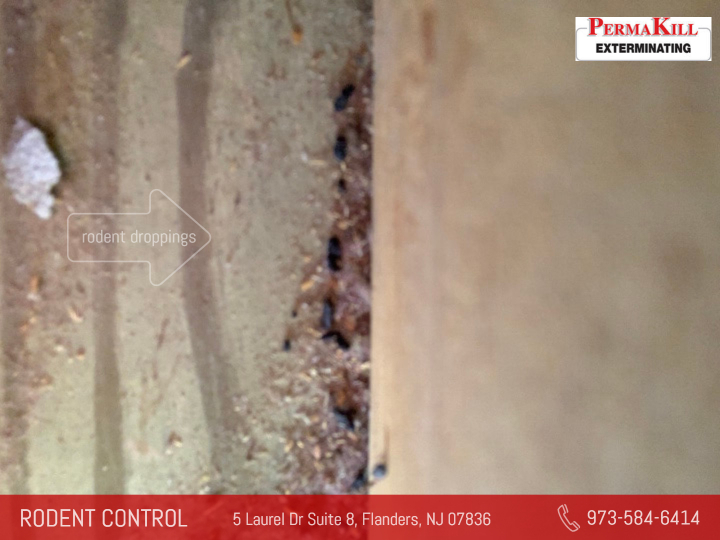


Rats are filthy pests that can bring diseases and damages to a home, which is why it’s important to contact a professional exterminator at the first sign of rat presence. One easy way to find out if rats have been living on a property is to look out for rat droppings.
So how can you identify rat droppings based on their appearance? Compared to mouse droppings, rat droppings are larger – they’re about the size of raisins with blunt ends. More rat feces can be found in areas where they sleep, which is why there will be more droppings the closer you get to the rat nest.
Every year during winter, around 21 million American homes report rodent infestations on their property. These disease-causing rodents are attracted to homes with warmth and a stable source of food and water. To check your home for rat presence this winter, the easiest way is to look for rat droppings.
Aside from being unsightly and foul-smelling, rat droppings also bring different diseases that your family and pets may contract. These rat wastes typically appear as pellets and their color varies depending on when it was produced. Fresh droppings are dark and moist, but they eventually harden and lose their color as days pass.
Rat droppings have different shapes and sizes depending on the species of rat they come from. Roof rats produce smaller droppings than brown rats. They are also curved, unlike the rectangular droppings that brown rats produce.
| Size | Quantity | Shape | |
| Mouse Droppings | ¼ inch | Up to 75 pellets per day | Small; one or both ends of each pellet may be pointed |
| Brown Rat Droppings | ¾ inch | Up to 50 pellets per day | Large; rectangular pellets with blunt ends that are typically found in small aggregates |
| Roof Rat Droppings | ½ inch | Up to 50 pellets per day | Large; curved and shaped like sausages with pointed ends |
Although both mice and rats have disease-causing droppings, there are significant differences between them that can help identify which rodent is infesting the home. By determining what rodent is wreaking havoc under the roof, it’s easier to narrow down the effective rodent control method to be used.
Mouse droppings are significantly smaller than rat droppings at only a quarter inch each pellet. Although they are smaller, mice can produce more of these pellets every day. On the other hand, rat droppings are further divided into two kinds that depend on the rat species that laid them.
Brown rats (also called Norway rats) have large droppings that are clumped in aggregates. These are large pellets with blunt ends. Roof rats also create large droppings, but they’re slightly smaller than those of the brown rats. These are usually shaped like sausages that are scattered around an area.
Rats are nocturnal animals, which makes them difficult to spot during the day. Their droppings are a good indicator of their presence in a home. By looking at the amount of droppings around the house, you can get an idea of how severe the infestation is. Droppings are also a good indicator of the rat nest’s location. Aside from the unpleasant smell getting stronger, you will also notice more droppings the nearer you get to the nest.
If you suspect a rat infestation at home, here are some of the best places to check for rat droppings and nests:
Direct contact with rodents is only one way of transmitting diseases. Humans and their pets can also contract different disease-causing pathogens when they accidentally ingest rat droppings or consume food that’s been contaminated.
Here are some of the most common diseases that these rat droppings may carry:
Before cleaning the rat droppings inside your home, it’s important to ensure first that these rodents are gone for good. Removing the rat wastes is useless if the rodents are still inside the home because they will just produce more droppings.
Rodent exterminating companies typically include the removal of rat droppings in their services, but you can also get rid of the pest waste. Just ensure to follow the precautions set by the Center for Disease Control and Prevention Center (CDC). Here are important practices to observe when cleaning the rat droppings at home:
Here at PermaKill Exterminating, we understand the importance of finding a trusted rat exterminator that can eliminate the pests at home safely and efficiently. With the right pest control techniques and tools, you can count on us to get rid of the rats in your home.
Learn more about our smart and safe rodent extermination services by calling us now.
Read more: Roof Rat vs House Mouse: Which One Has Invaded Your House?